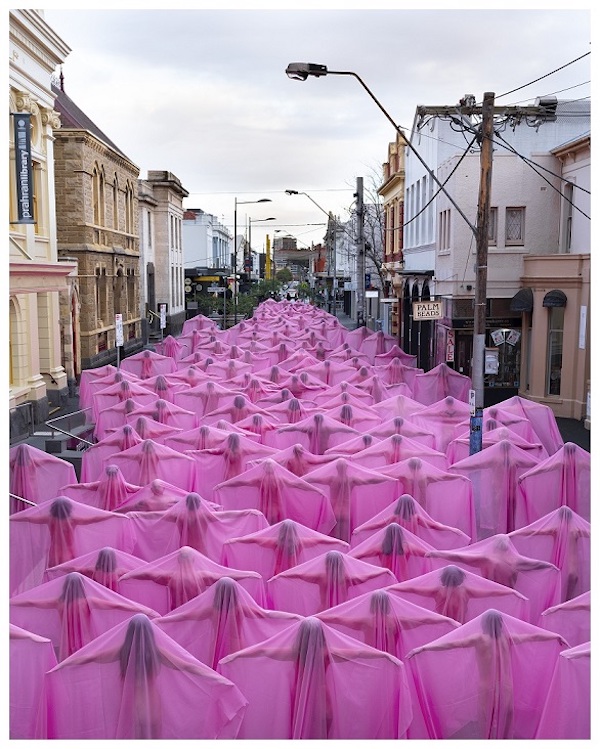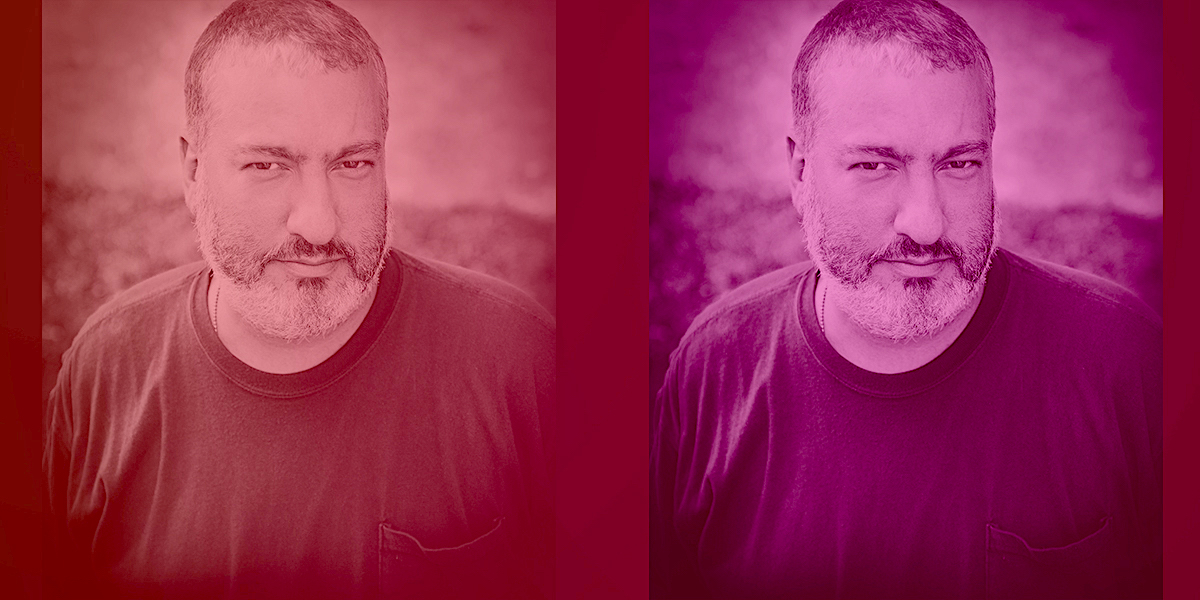The work of artist Spencer Tunick defies genres by transforming both landscapes and the human form into powerful artworks. He reinvents public spaces to create temporary monuments using naked bodies. Tunick is constantly rewriting the locations through a complex, organic composition; they are figurative yet abstract, inherently public, and deeply intimate: they depict sincere unity and wild differences. The photographs are simultaneously painterly, sculptural, performative installations.

How do you define your practice?
Observing, gathering, executing, sharing
Which artists made you want to become an artist?
Yayoi Kusama. In particular, her new york nude street happenings from the ’60s. And Carolee Schneeman’s group gatherings, in particular, Meat Joy, 1964
As an artist, how has your work evolved over the years?
I began photographing nude individuals on the streets of New York City in the early 90s. The work at that time was more of a narrative or portraiture. It was meeting friends in the pre-dawn of New York City to co-create these odd, surreal, whimsical individual portraits. One-on-one with people. After a while, word got around, and more and more people wanted to pose, so before I knew it, I had many people wanting to participate in my individual portraits. I only could work on weekends because I was always trying to avoid pedestrians and car traffic and only on weekends at sunrise were the streets empty. As my weekends filled up with shoots, I found that a lot of people were disappointed that I could not photograph them because of the limited time in the calendar as Summer and the warm weather was short in the North Eastern United States. So because of these practical limitations, I began thinking of ways to accommodate everyone. This was when I started grouping multiples of people in one shot. It was then that I saw something in the work begins to change and that excited me. When the bodies are grouped, they begin to lose their individuality and become more of a substance against or a part of a location. I knew I wanted to continue to explore that. It is from that early transformation of the work from Individuals to groups that my work evolved into what it is today.
Have you taken your art as far as it can go? or do you see many more years of site-related installations?
I work on many different series at once. There are series and works I have never exhibited or published. I have so many ideas to lift people floating into the sky and under the oceans. Not enough time in my life or enough support to take it farther. Sometimes it doesn’t take a village, it takes support.
How much does the landscape play in defining your work/compositions?
When I work, choosing the landscape/cityscape is equally essential to the individuals in mass that fill the space. Therefore, I often like the background of my landscapes to be slightly blurred to soften the grittiness of the city as your eye moves from the base of the photograph to the top.
In past projects, nude participants have reported feelings of liberation and euphoria. How does it feel being the puppetmaster? Do you also feel empowered?
This ancillary side of my work is incredibly rewarding. Not intended when I started, but I have come to fully appreciate this aspect of the experience as time went by. I try so hard to create a spirited experience for the participants. I am so grateful for their time and courage and trust.
You have achieved international recognition in the same way as Christo and Jeanne Claude. Do you see a parallel in your careers?
I don’t really see a parallel as far as career. I do work with my wife, but she is not so much a public person.
Regarding vision and concept, there could be a parallel drawn because I also wrap cities and deserts; however, I use people as the medium, people who hopefully enjoy collaborating on these projects with me. I’m not using plastic or fabric. It’s more complex on a human level, less on a material level. Christo and Jeanne Claude are heroes of the material world.
Do you feel you sit within the mainstream art world, or do you consider yourself an uncategorisable outsider?
I’m a clothed insider and a naked outsider.

How important is the process of documentation in your practice?
Very, not so much for the resulting art, but for the people. The participants love to see themselves making the works. So we try our best to shoot video of the process.
I do sometimes make art videos, but I mainly focus on the photography that results from the installations. Hopefully, one day I can put together some more videos that convey my vision through that medium.
What is your ultimate dream space to organise an installation?
On the rocks below the American side of Niagara Falls and someplace in Asia. Actually, anywhere in Asia. Mars. Mars is possible, sort of.
Tell us about your upcoming exhibition in The Netherlands. Is this a bit of a retrospective?
I was thinking of showing works I have made in the Netherlands only with this first-ever exhibit in Amsterdam. But the gallery thought to show an overview of my colour group works. Many of which have never been printed large and seen before.
I love when other people choose the groupings of my framed works. It helps me to see things in a new and exciting way. In addition, having someone else work on the editing and curating of an exhibition is extremely rewarding and always seems to lead me to new ideas and inspiration on how to present my work.
Spencer Tunick’s new show Public Interventions runs from 17 September 2022 at Reflex Amsterdam

